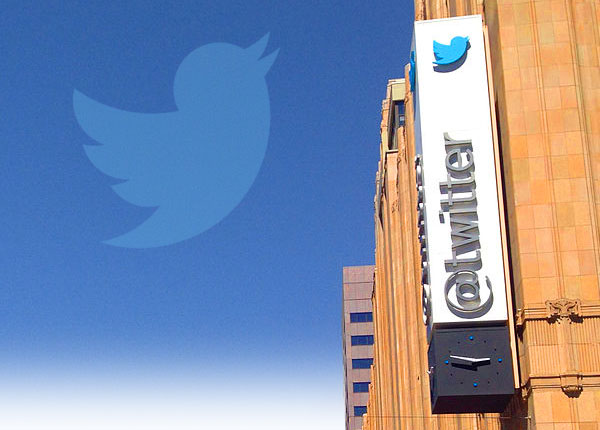Twitter’s share price plunged 12.3 percent Thursday, closing the day at US$16.41, after the company released its Q4 2016 financial report. It fell further on Friday, trading at $15.54 mid-day.
On the bright side, daily active usage grew for the third consecutive quarter and strong growth is expected to continue, the company said. Active monthly users in Q4 totaled 319 million, up 4 percent year over year, and 2 million more than in Q3. Both tweet impressions and time spent on Twitter increased by double digits YoY in Q4. Total engagements were up 151 percent.
Financial Engineering?
However, YoY ad revenues fell, totaling $638 million, and losses totaled $167 million in Q4 compared with $90 million during the same period in 2015. Adjusted EBITDA margins for 2016 totaled 30 percent, compared with 25 percent for 2015; and Twitter’s quarterly GAAP net loss was $167 million, while quarterly non-GAAP income was $119 million.
The mixture of GAAP and non-GAAP figures is unusual, said Mark Skilton, a professor at Warwick Business School.
It “feels like financial engineering to try to demonstrate growth that excludes the activities they are spending on, operational investments and costs,” he told the E-Commerce Times.
There is a growth in margins, Skilton noted, but “there’s confusion when I’m also seeing a $176 million reported loss.”
Fakes, Frauds and Trolls
Twitter’s user and engagement metrics are meaningless, said Trip Chowdhry, managing director for equity research at Global Equities Research.
“There are too many fake IDs, too many fake followers and too many fake comments,” he told the E-Commerce Times.
For example, adherents to the extreme views of the alt-right retaliated against Twitter’s suspension of several high-profile alt-right advocates by creating a storm of fake accounts.
Cracking down on fake accounts will create a new problem for Twitter, because “their user numbers will only amount to 20 percent of what they are now,” Chowdhry said.
One solution would be to require all users to authenticate their identities, and require validation with credit card numbers, he suggested, but “that’s not going to happen.”
Getting Money Is Hard
Twitter’s core problem is its inability to convert traffic to new platform services when compared to larger competitors such as Facebook and Google, Warwick’s Skilton said.
Twitter has warned that keen competition may hamper its ability to garner revenue from ads.
The online ad market “is cutthroat [and] highly competitive,” but the underlying issue is “Twitter’s inability to create sticky pull-through of audiences,” Skilton noted.
Twitter’s website is “flat and uninteresting, [and] it has no communities or reasons to stay other than ranting from the likes of Donald Trump and … pop stars,” he added. Further, the consumer base is fickle and jumps to other sites such as WhatsApp and SnapChat.
Although ad placements grew 150 percent, revenue did not keep pace, because Twitter has cut prices to compete against the likes of Facebook and Google, Skilton pointed out.
Twitter’s performance figures “make Twitter an even more likely target for a takeover if this slide continues,” he said.
Is It Curtains for Social Media?
Twitter isn’t the only social media company whose share prices fell following its latest financial report.
Facebook slipped last week. After the company released its Q4 earnings report, beating analysts’ estimates, its stock briefly hit a record high but then closed the day down 1.8 percent at $130.84.
“I don’t think either Twitter or Facebook can grow, because social media fatigue is setting in,” Chowdhry said.
2017 will be a bad year for social media as a whole, he predicted.
In spite of increased attention due to President Trump’s propensity for tweeting, Twitter’s stock likely will fall below $10, he predicted.
Expecting President Trump’s extensive use of Twitter to positively impact the company’s shares would be a mistake, Chowdhry said. “By that logic, people should go invest in Evian because he drinks Evian water.”
























































Social Media
See all Social Media